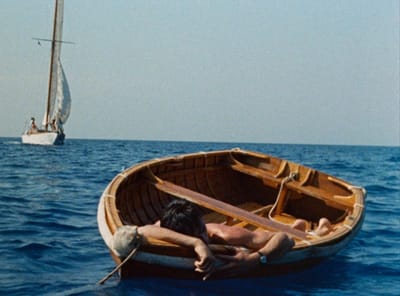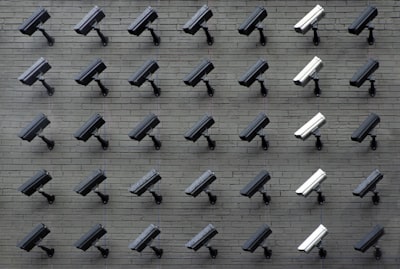Patricia Highsmith's The Talented Mr. Ripley was selected as the first book the summer 'wayward travels' series chiefly because of travel's central role to the story. Through travel, the plot thickens, Tom's innocence forges, and his identity mutates.
Travel is not merely a matter of setting, but begs the question we all wonder when we jet-set to another location: when I travel to a new destination, will I become a new person too?
The specificity of location is remarkable in Highsmith's novel. The opening scene begins in a NYC bar and ends in a cab with Tom exclaiming the name of his final destination – a hotel in Athens. Between each of those scenes, nearly all of the locations Tom traveled too are true. Ostensibly, the story's central town of Mongibello is the only major fictional location in the entire story. But San Remo, Mallorca, the San Spiridione in Venice – they're all on the map. Places you and I could visit tomorrow.
This specificity – in the pre-internet era – was possible because Patricia Highsmith lived as an expatriate, writing from the very streets and cafes she mentions across France, Italy, and Greece. Patricia, American by birth, found the U.S. "hollow" and chose to live most of her adult life abroad. Was she also warranted a new identity by her surroundings? Perhaps it's this reason that the European setting is presented so eloquently while life in in America was always in question. Why, Tom asks himself, would he ever "want to come back to subways and taxis and starched collars and a nine-to-five job?" Short of mistaking fiction for memoir, the sharpness in both perceptions is because Patricia Highsmith had through her life lived as both...American impostering as European.
So, in the spirit of method reading, below you'll find a near-exhaustive list of all the real life hotels Tom Ripley called home during his very wayward venture across Europe. Browse and imagine Patricia writing this book, Tom rehearsing his next tale, you vacationing – strong martini in hand.
If you should choose to book a stay in any of these hotels – be weary of any Americans you meet trying to lure you back to the states.
The Hotels of Tom Ripley: Or; Why Not Try A Little Method Reading
Naples – pg. 50
Tom's first hotel he stayed at in Naples was not named. But we know it was a short walk away from the famous Zi Teresa, on the Saint Lucia bay.



Mongibello – pg. 60
Yes, Mongibello is a fictional town. But its location, description, and even establishments match the famous seaside Positano. Before Tom shacked up in Dickie's guest room he stayed at the Miramare, a classic getaway that's been hosting guests since the 1930s.



San Remo – pg. 112
The boys intended to stop in the commune of San Remo, Italy. But if records are true, they stayed at a hotel about an hour from there, a staple in the French Riviera, the Gray d’Albion. God, why weren't I born French?



Rome – pg. 138
Tom plans to remain incognito in Rome, so avoids the more flashy Hassler hotel, and opts to stay at one more moderately priced, where expats won't care to be seen, Hotel Europa.



Paris – pg. 143
It's in Paris where Tom first relishes in his new identity as Dickie Greenleaf. Merely coincidence, perhaps, at the hotel named after the French philosopher who once wrote, "Anyone who can make you believe absurdities can make you commit atrocities." Where else to fulfill that warning but the Hotel du Quai-Voltaire.



For the next forty pages or so we've locations of activities, but no details on residence. We know that Tom spends time at the Monte Carlo Casino in Monaco. Then Tom – excuse me, Dickie – rents an apartment in Rome on the via imperiale near the pinciana gate (pg. 152). Over the phone with Marge, he lies and says that he's at a hotel Eliseo (pg. 154).
Rome – pg. 183
Tom moves to the same hotel that he first claimed Dickie posted up in when he was really buried at the bottom of the sea. He moves to conceal his identity from Dickie's real friends, from stopping anyone to showing up at his apartment and recognizing that all along Dickie has not been seen. Where else to ... but The Inghilterra.



Sicily – pg. 204
LA PALMA
It's his darkest hour, a place where he came closest to being caught.



Trento – pg. 223
Tom needs an alibi to account for his unaccounted months. Where was he, when only Dickie Greenleaf was the one on record checking in and out of hotels? He was roadtripping Europe, on the cheap, sleeping in the back of his Lancia Aurelia – of course.



Venice – pg. 224-241
In Venice, Tom rents another apartment – a palazzo to be exact – overlooking San Marco, next to the Della Salute. Before then he has brief stays at a Costanza hotel near the Rialto bridge and a dinner in the Grand Hotel. Only the latter remains in business. Here, the iconography is iconoclast Italian, rooted in a city who, like Tom at the time at his arrival, faces a precarious future.



Venice – pg 296
Tom's essentially absolved from any wrongdoing in Venice, at this very hotel, The Gritti.



Athens – pg. 334
In the final sentence of the novel, Tom declares his final residence, ‘Il meglio albergo. In Italian: the best hotel. So where did he go? We don't know in book one. But book two opens with him in Athens, at the Hotel Grand Bretagne.








